The Roaring Twenties

Brief Synopsis
Cast & Crew
Raoul Walsh
James Cagney
Priscilla Lane
Humphrey Bogart
Gladys George
Jeffrey Lynn
Film Details
Technical Specs

Synopsis
In France, as the Armistice is signed, three American soldiers speculate about their future. Eddie Bartlett believes that his old job as a garage mechanic awaits him, while George Hally, a saloon keeper, has no fears of the just enacted prohibition and Lloyd Hart, a law graduate, plans to take up the law. However, the America to which they return home has changed. Eddie finds his old job filled and,in the face of rampant unemployment, is forced to drive a cab. One night, he unwittingly delivers a package of liquor to Panama Smith, a nightclub hostess, and the two are arrested. Eddie refuses to testify against Panama, and out of gratitude, she pays his fine and backs him in the bootlegging business, where he soars to prosperity and power. While at a show one night, Eddie meets Jean Sherman, his penpal during the war who is now an aspiring singer, and falls in love, not realizing that the girl is interested in Lloyd, who is now working as Eddie's attorney. Another person from his war days comes back into his life when Eddie meets George while hijacking a load of liquor from bootlegger Nick Brown. The two old army pals become partners, but are destined to become enemies. Ruined in the stock market crash, Eddie goes back to driving a cab and meets Jean, who is now happily married to Lloyd. George, the object of a criminal investigation, learns that Lloyd, who is now employed in the district attorney's office, has gathered evidence against him, and sends a death warning to Jean, who appeals to Eddie for help. When Eddie goes to George to urge him not to harm Lloyd and Jean, George orders Eddie killed. Pulling a gun, Eddie shoots George, but then meets his own death at the hands of George's gunmen.

Director

Raoul Walsh
Cast
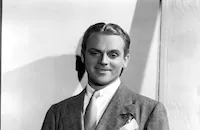
James Cagney

Priscilla Lane

Humphrey Bogart
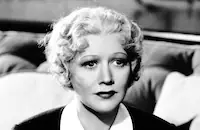
Gladys George

Jeffrey Lynn
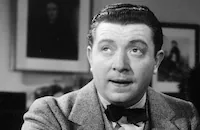
Frank Mchugh

Paul Kelly

Elisabeth Risdon
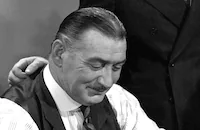
Ed Keane
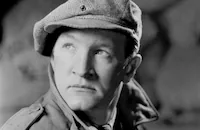
Joe Sawyer
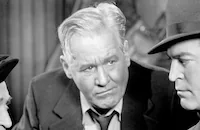
Joseph Crehan

George Meeker

John Hamilton
Robert Elliott
Eddie Chandler
Max Wagner
Vera Lewis

Abner Biberman
John Deering
Ray Cooke
Robert Dobson
John Harron
Murray Alper
Dick Wessel
Norman Willis

Lee Phelps
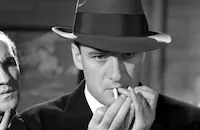
Elliott Sullivan
Pat O'malley
Nat Carr
Wade Boteler
Charles Wilson
Philip Morris
Alan Davis
Arthur Loft
Ben Welden
George Humbert
Al Hill
Raymond Bailey
Lew Harvey
Paul Phillips
Herbert Heywood
Cliff Saum
Bert Hanlon
Ann Codee
Jack Norton
Alan Bridge
Charles Sullivan
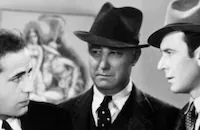
Jack Mower
Carl Harbaugh
Eddie Hart
James Blaine
Warren Rock
Paul Bryar
Mike Lally
Don Rowan
Charles Marsh
Harry C. Bradley
Lottie Williams

Clay Clement
Donald Kerr
Jane Jones
George Lloyd
Mel Kalish
William Pawley
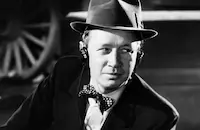
Eddie Acuff
Milton Kibbee
Donald Kerr
Billy Wayne

John Ridgely
Frank Wilcox
Wen Niles
Reid Kilpatrick
Dutch Hendrian
David Oliver
Al Herman
Joe Devlin
Jeffrey Sayre
Crew
Milo Anderson
Earl Baldwin
Samuel Bischoff
E. A. Brown
Hugh Cummings
Frank Donoghue
Edwin A. Dupar
Leo F. Forbstein
Ernie Haller
Byron Haskin
Ray Heindorf
Mark Hellinger
Jack Killifer
Richard Macaulay
Dick Mayberry
Max Parker
Robert Rossen
Jerry Wald
Jack L. Warner
Perc Westmore
John Wexley

Photo Collections
Videos
Movie Clip







Trailer
Hosted Intro
Film Details
Technical Specs

Articles
The Roaring Twenties
Characters in The Roaring Twenties were based loosely on actual Prohibition-era personalities, such as nightclub hostess Texas Guinan ("Hello, sucker!" was her refrain to club patrons) and New York gangster Larry Fay, who was reportedly the model for the literary character Jay Gatsby.
Incorporating newsreel clips and popular music from the period, and a voiceover by an omniscient reporter who assures the audience that what theyare about to see is based on true events, The Roaring Twenties has something of a pseudo-documentary feel.
Humphrey Bogart co-starred in the film with Cagney; that year, they made three memorable gangster films together for Warners, which specialized at that time in gritty crime dramas. In addition to The Roaring Twenties, their last film together, the two appeared in Angels With Dirty Faces and The Oklahoma Kid, both in 1939.
Cagney found that the freedom to improvise that Walsh allowed him helped boost the script into an above-average genre film. Cagney recalled the collaborative atmosphere on the set, remembering how one actor, Frank McHugh, suggested a different opening scenario than the one provided in the script. All agreed to trash the opening scene and go with McHugh's suggestion, thus providing the irreverent banter between Cagney and Bogart, who meet as doughboys in a World War I foxhole.
Cagney reminisced later about the little touches that he felt "added flavor to bland writing," including the addition of the hilarious exchange between his character and Priscilla Lane's, in which his advances are turned down in humiliating fashion. In another scene, Cagney spiced up a run-of-the-mill fight by positioning one opponent to accidentally hit another adversary after being punched by Cagney's character. The film also benefits from an able supporting cast -- notably Gladys George (who inherited the part from Ann Sheridan) as the Texas Guinan character, plus McHugh and Lane, as Cagney's romantic interest.
The film did extremely good box office and Cagney won a Best Actor award from the National Board of Review -- quite an accomplishment in a year that saw the premieres of such classics as Gone With the Wind, Mr. Smith Goes To Washington, and Stagecoach.
The Roaring Twenties turned out to be a transitional film in Cagney's career; his subsequent roles during the 1940s would focus on his song-and-dance talents in such movies as Yankee Doodle Dandy (1942). Walsh would work with Bogart again in They Drive By Night (1940) and High Sierra (1941), in which Bogart started to create the world-weary character that would be most identified with the Bogie legend. Ten years after The Roaring Twenties, Cagney would reunite with Walsh for White Heat (1949), in which he would revive the gangster character that put him on the map.
Producer: Sam Bischoff
Director: Raoul Walsh
Screenplay: Richard Macaulay, Robert Rossen, Jerry Wald
Art Direction: Max Parker
Cinematography: Ernest Haller
Costume Design: Milo Anderson
Film Editing: Jack Killifer
Original Music: Ray Heindorf, Heinz Roemheld
Cast: James Cagney (Eddie Bartlett), Humphrey Bogart (George Hally), Priscilla Lane (Jean Sherman), Jeffrey Lynn (Lloyd Hart), Gladys George (Panama Smith), Frank McHugh (Danny Green), Paul Kelly (Nick Brown), Elisabeth Risdon (Mrs. Sherman).
BW-107m. Closed captioning.
by Genevieve McGillicuddy

The Roaring Twenties
Quotes
You always said you were going to take real good care of me, didn't you George?- Eddie Bartlett
Wait a minute Eddie, I can explain!- George Halley
Here's one rap you ain't gonna beat!- Eddie Bartlett
Who is he?- Cop
He used to be a bigshot.- Panama Smith
I think you're a pretty decent guy. I like to talk to decent guys. They're hard to find.- Panama Smith
Things have been pretty tough, haven't they?- Panama Smith
They could be tougher. A guy in the cell with me was talkin' about bumpin' himself off. Until I get around to that, I'm doin' all right.- Eddie Bartlett
I always say, when you got a job to do, get somebody else to do it.- George Hally
I'm sick of watching you try to put out that torch you carry for her with a lot of cheap hooch. Who does the kid look like?- Panama Smith
Like her.- Eddie Bartlett
And they got a nice house.- Panama Smith
Yeah, it's a nice house if you like that kind of a house, but for me, uh, I'll take a hotel anytime. You know that.- Eddie Bartlett
Me too. Ain't it funny how our tastes have always run the same? Ever since the first time we met. I can just picture you living in the suburbs, working in a garden, raising flowers and kids. Wouldn't that be a laugh.- Panama Smith
Yeah, wouldn't I look cute?- Eddie Bartlett
Trivia
The character of Panama Smith was partially based on actress and nightclub hostess Texas Guinan.
Notes
The working title of this film was The World Moves On. According to the Variety review, Mark Hellinger wrote the original story from his own personal experiences as a newspaper reporter in the 1920s. A news item in Hollywood Reporter adds that 40 former bootleggers applied for the job of technical director on this film. The one finally chosen declined screen credit. The picture marked Raoul Walsh's directorial debut at Warners. It was included in the National Board of Review's "ten best" list of 1939. Modern sources add Fred Graham to the cast.

Miscellaneous Notes
Released in United States 1939
Anatole Litvak began direction on the film before being replaced by Raoul Walsh.
Released in USA on video.
Released in United States 1939















